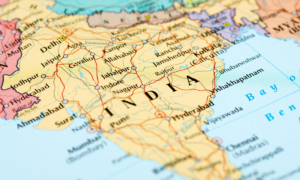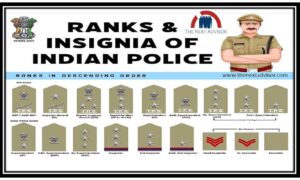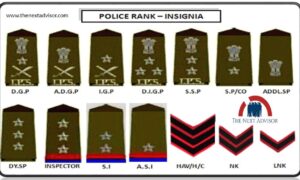Hussainara Khatoon Case is one of the important judgments of the Supreme Court and it is very important for the Constitutional purpose and for the study and for the Competitive exams. Let us see All about Hussainara Khatoon Case alias Hussainara Khatoon Vs Home Secretary State of Bihar.
BACKGROUND of the Hussainara Khatoon Case
The then prevailing laws in India permitted that, in case of commission of an offence, only the victim or a relative of the victim could file a petition before the court. Ignoring this mandate, a writ petition of habeas corpus came before the SC, filed by Pushpa Kapila Hingorani, along with her husband, Nirmal Hingorani.
Kapila was an Indian lawyer who wanted to bring forth the conditions of the undertrial prisoners of Bihar, which had been highlighted earlier in an article published in the Indian Express in 1979. The article read about how the undertrial prisoners were serving in prison and under what conditions, with some of them serving for more than their actual span of imprisonment. The habeas corpus is instituted so that a person is protected from unlawful incarceration i.e. the custody of such has to be proven in order to hold him/her further.
The writ petition filed by Kapila was the first case of ( PIL ), and it demanded the release of 17 undertrial prisoners, which were mentioned in the same article of 1979. The Bihar government was asked to file a revised chart which displayed the yearly break-up of undertrial prisoners after dividing them into two categories, viz. those having committed minor offences and those having committed major ones.
Facts Of the Hussainara Khatoon Case
• The then prevailing laws in India permitted that, in case of commission of an offence , only the victim or a relative of the victim could file a petition before the court. Ignoring this mandate, a writ of habeas corpus came before the Supreme Court of India, filed by Pushpa Kapila Hingorani, along with her husband, Nirmal Hingorani.
• Kapila was an Indian lawyer who wanted to bring forth the conditions of the undertrial prisoners of Bihar, which had been highlighted earlier in an article published in the Indian Express in 1979. The article read about how the undertrial prisoners were serving in prison and under what conditions, with some of them serving for more than their actual span of imprisonment.
• The writ petition filed by Kapila was the first case of Public Interest Litigation in India ( PIL ), and it demanded the release of 17 undertrial prisoners, which were mentioned in the same article of 1979.
• The Bihar government was asked to file a revised chart which displayed the yearly break-up of undertrial prisoners after dividing them into two categories, viz. those having committed minor offences and those having committed major ones.

Hussainara Khatoon Case
JUDGEMENT
• The Supreme Court in Hussainara Khatoon Case held that the detention of these prisoners was illegal as it completely violated the Fundamental Right to Life and Liberty under Article 21 of the Indian Constitution.
• The Supreme Court understood the callousness of the legal justice system and the lack of money and resources poor people have to face, depriving them the access to justice. Justice Bhagwati held that the State cannot deny a person its Fundamental Right to a speedy trial on the ground that it lacks the adequate resources to improve the legal justice system and further the impetus of a speedy trial.
•The Court ordered to discharge of all the under-trial prisoners whose names were there in the list submitted by Advocate Pushpa Kapila Hingorani. The Court also noted that long-term detention would be illegal and violate their fundamental rights under Article 21 as these prisoners are detained longer than what could have been awarded to them if they were tried and convicted.
•Article 21 of the Constitution is violated when an accused is not given a speedy and just trial, or is refused bail on unreasonable grounds, especially when one is indigent, or where an under-trial prisoner is forced to undergo imprisonment for a term longer than. his / her actual punishment, or when the accused is poor and is not provided with free legal aid by the State.
AFTERMATH
● The Hussainara Khatoon case revolutionised the Indian legal system. Hussainara was one of the six women undertrial prisoners that were held in the prisons of Bihar, hence the name.
● The case not only released the undertrial prisoners held in Bihar, but it triggered the release of 40,000 undertrial prisoners nationwide, which were held illegally despite their imprisonment terms being over.
● Since the Hussainara Khatoon case was the first PIL in the Indian legal system, Mrs Hingorani came to be known as the ‘ mother of PILS ‘.
● She, later on, revealed the Bhagalpur Blindings case, when the atrocities of some policemen, who had blinded 33 suspected offenders using needles and acid.
CONCLUSION
•The right to get free legal aid and a speedy trial is guaranteed under Article 21 of the Constitution
•More importantly, it is the duty of each citizen to be well – aware of his / her rights provided to him/her under the law, because vigilantibus non-dormientibus Jura subventions ( the law assists those who are vigilant of their rights and not those who sleep over it ).
•Advocate Pushpa Kapila Hingorani is regarded as the ” Mother of Public Interest Litigation in India .”
• Father of PIL in India is Justice PN Bhagwati
Legal World finds in PIL
1 ) WRIT PETITION- A writ petition is an application filed before a Court, requesting to issue a specific writ.
2 ) HABEAS CORPUS- ” You may have the body issued against illegal detention. ADM Jabalpur vs Shivkant Shukla case – Habeus Corpus case
3 ) UNDER – TRIAL- A person awaiting trial
4 ) PIL- Public interest Litigation ( PIL ) means litigation filed in a court of law, for the protection of ” Public Interest “,
5 ) VICTIM- ” Victims ” means persons who, individually have suffered harm
6 ) UNLAWFUL INCARCERATION – the act of putting or keeping someone in prison


























